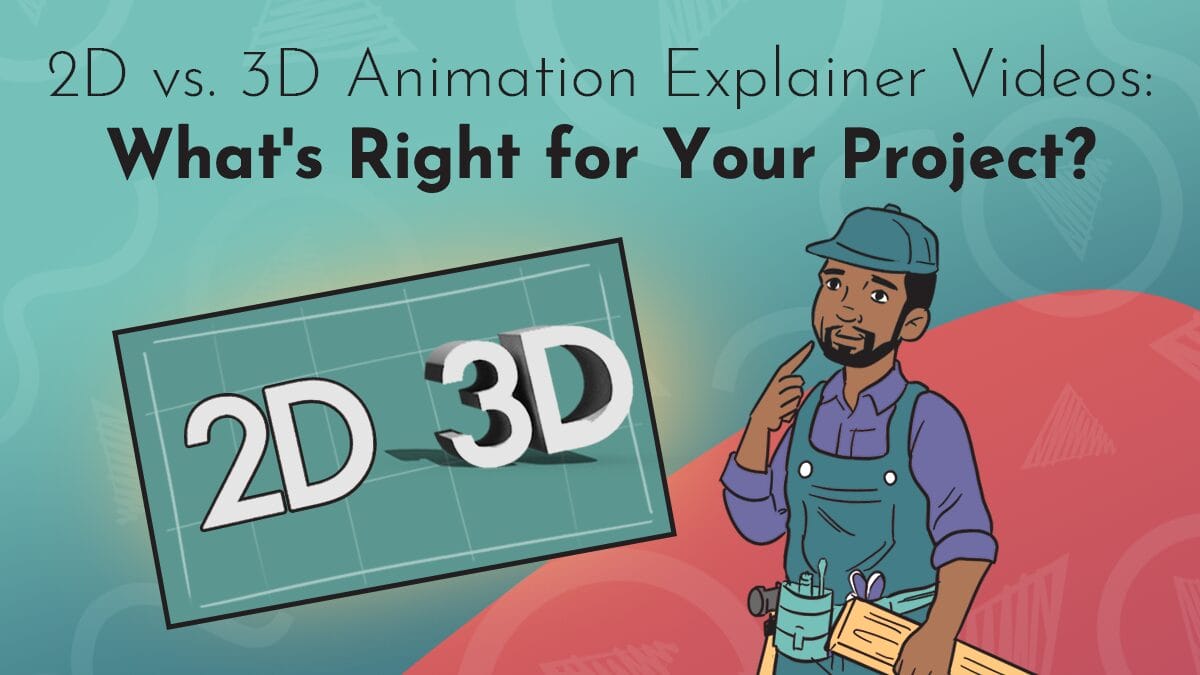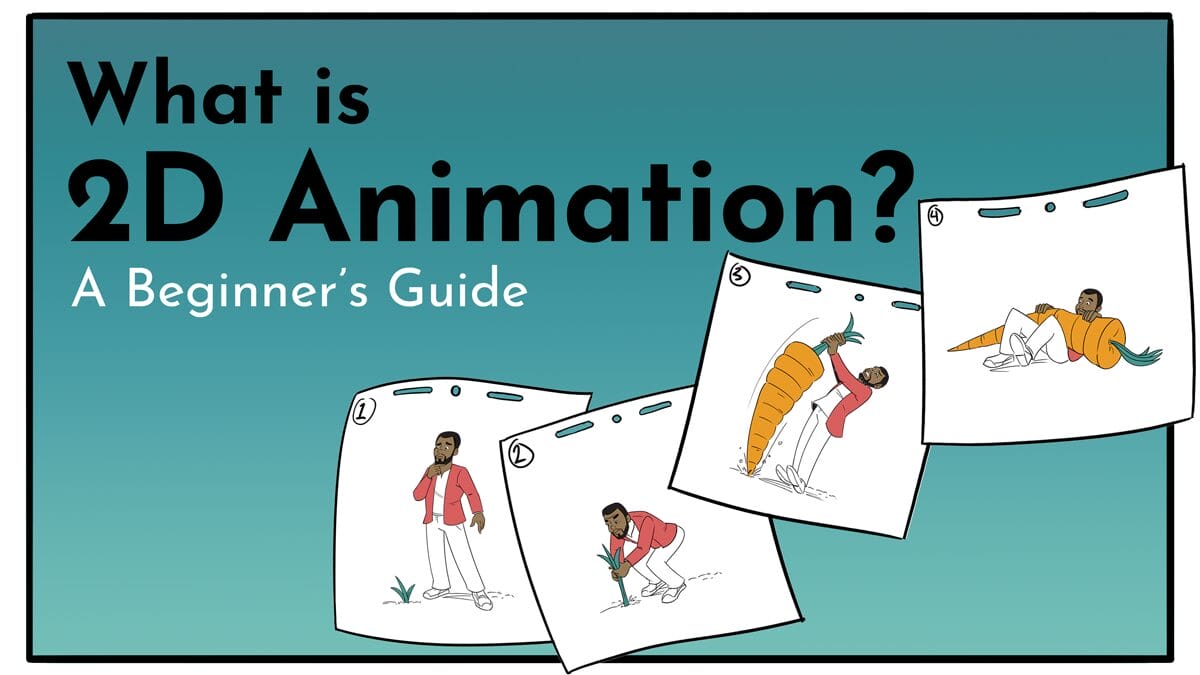
Animation has the power to captivate. It can be stunning. It can be imaginative. I can offer your brand a means of expressing itself that live action simply can’t.
But there are numerous kinds of animation types to consider. And each comes with distinct opportunities and drawbacks: 2D vs 3D animation is a question we often tackle with our clients when developing our award-winning explainer animations. So today, we wanted to share our expert tips on better understanding these two animation types.
With the right knowledge in-hand, you can make the educated decision about whether to select 2D vs 3D animation for your business.
Understanding 2D Animation
2D animation is a traditional form of animating that has been around for decades. Unlike 3D animation, where objects have depth and appear to occupy real space, 2D animation focuses on creating movement and storytelling through flat images arranged in a sequence. Think classic Disney films, or your favorite shows on Cartoon Network.
2D animation is widely recognized for its versatility and effectiveness, especially when conveying complex ideas in a visually engaging way. In fact, one of the key features that distinguishes 2D animation from its 3D counterpart is its artistic flexibility.
2D animation allows for a wide range of artistic styles, from hand-drawn, sketch-like visuals to more modern, vector-based designs. This versatility makes 2D animation an excellent choice for explainer videos that need to convey a message with clarity and creativity. Moreover, 2D animations are often quicker and more cost-effective to produce, making them a popular choice for projects with tight deadlines or limited budgets.
Popular examples of 2D animated explainer videos include those that use relateable characters and settings drawn in a branded, stylized manner to guide viewers through processes, products, or services. These videos leverage the strengths of 2D animation—like the ability to focus on storytelling and communication without the distraction of overly complex visuals.
Check out an example of our best 2D Animation work below – or see more 2D animations from our studio here. Want to dive deeper? Check out Unity’s comprehensive overview of 2D animation and Academy of Animated Art’s exploration of this art form.
Exploring 3D Animation
3D animation occurs where objects are created in a three-dimensional space. Unlike 2D animation, which focuses on flat images, 3D animation gives depth to characters and objects, allowing them to move and rotate like they would in real life. This added dimension brings a level of realism and detail that is particularly useful for complex, hyper-detailed demonstrations.
When comparing 2D vs 3D animation, one of the main differences is how they are created. 3D animation involves modeling characters and environments in a virtual space, adding textures, and then animating them using keyframes and other techniques. This process can be more time-consuming and requires specialized software and skills, but the results can be incredibly lifelike and visually impressive.
Effective examples of 3D animated explainer videos often showcase products, medical procedures, or technical processes where a high level of detail is necessary to fully convey the message.
These videos use the power of 3D animation to create a tangible sense of space and depth, making it easier for viewers to understand complex information.
This 3D Animation created to showcase the dynamic accessories of Toothshower goes beyond a traditional advertisement: an informative narration paired with visually rich and engaging experience leaves audiences ready to spring into action when they hear the call to purchase.
When considering 3D vs 2D animation, it’s clear that the added realism of 3D is ideal for projects that require a deep level of detail. If you’re looking for more examples of 3D explainer videos, check out some of our 3D animation projects or learn more about what makes a great explainer video here. We’ve also linked the 3D overviews from Academy of Animated Art’s guide or Unity’s overview if you wish to dive deeper.
2D vs. 3D Animation: Pros and Cons
Our goal, after almost fourteen years of animating award-winning explainer videos, is to help people get their most important ideas heard.
We’d like to share a straightforward comparison to help you decide: Which is right for my project – 2D vs 3D Animation?
Pros of 2D Animation
- Cost-effectiveness and quick production time: 2D animation typically has lower production costs and faster turnaround times, making it ideal for projects with tight budgets or deadlines.
- Artistic and stylistic versatility: The simplicity of 2D animation allows for a wide range of styles, from minimalist designs to highly detailed illustrations.
Cons of 2D Animation
- Limited realism and depth: Unlike 3D animation, 2D lacks the depth and realism that can make visuals more immersive.
- May not always stand out in a competitive market: In some cases, the simpler visuals of 2D animation might not capture attention as effectively as the more complex visuals in 3D
Pros of 3D Animation
- Realistic visuals and immersive environments: 3D animation offers a high level of realism, making it ideal for projects that require lifelike visuals and detailed environments.
- Technological appeal and modern aesthetic: 3D animation often has a modern, cutting-edge appeal that can resonate with tech-savvy audiences.
Cons of 3D Animation
- Higher production costs and longer development time: 3D animation is more resource-intensive, leading to higher costs and longer production times compared to 2D animation.
- Requires specialized skills and software: The creation of 3D animation demands advanced skills and specialized software, which can increase both complexity and cost.
You can dive deeper into the debate between 2D and 3D animation with resources from Academy of Animated Art and Business of Animation. Whether you’re considering 2D vs 3D animation pros and cons, or focusing specifically on 2D animation vs 3D animation cost, it’s crucial to choose the style that best aligns with your project goals. More on that in the next section.
Perhaps neither 3D or 2D is capturing your vision? We offer a range of styles suited to any need. For more insights into additional animation styles, watch this sampler video or explore our Animation Styles guide.
Choosing Between 2D and 3D Animation
Every project is different. Being prepared with all the facts about 2D animation and 3D animation styles isn’t enough: you must take the time to consider how these styles would interact with the specific goal you have when getting ready to create an explainer video.
When deciding between 2D and 3D animation for your project, several factors come into play. Here’s a quick breakdown to help you choose the best style for your needs:
Choosing the right animation style is crucial to the success of your project. For more insights on what might work best for you, explore 6 Reasons to Choose Next Day Animations for Your Explainer Video. You can also find more in-depth comparisons on 2D vs 3D animation from Business of Animation and Vancouver Animation School.
We can create a video for your mission – no matter your vision.
Get in touch with our remarkable studio to start your 2D or 3D Animation Project!
Call (202) 747-0404 or Get a Quote Below:



